Luxury Indonesia Travel
Bali is a majestic, mystical destination that has captivated intrepid travellers for centuries. The word ‘Bali’ has a cache in itself: evoking serenity, auspiciousness, and visions of tropical paradise. Now one of the world’s most famous tourism destinations, the island has lost absolutely none of its charm and remains a truly magical place to visit.
The ‘Island of the Gods’ is synonymous with spirituality, drawn from an ancient culture that is entirely unique to the island. Bali has stood apart from the surrounding Indonesian archipelago since ancient times, enjoying a distinct language and a religious backdrop which has evolved from Buddhism to Shavaism and – from 1st century AD onwards – its own unique brand of Balinese brand of Hinduism. This is evidenced today in an island-wide littering of staggering temples, often in spectacular (and highly photogenic) locations: mountain-tops, volcanic slopes, placid lakes, and dramatic cliff tops.
Inland Bali is an island of true adventure. Travelling across the island you’ll find an ever-changing landscape of fertile rice terraces, dense jungle, picturesque lakes, and soaring volcanoes. Adrenaline-fuelled activities are never far away, with opportunities for white-water rafting, high-intensity mountain biking or genteel cycling, and hikes of all lengths and difficulties.
Bali’s coastline is equally diverse. Serene white-sand beaches in the south, rocky and coral-rich off the east coast, and striking volcanic black sands along the west and north. There are beach resorts to cater for all tastes – some busy and bouncing; others isolated and tranquil – with immediate access to adventures both on and under the water. The eastern shores house the island’s best diving and snorkelling, while the west and south provide some of the world’s most famous surf destinations.
Within these pages, we outline the best of both Bali – and wider Indonesia. With a location right in the centre of the archipelago, and the country’s busiest airport, the island makes the perfect jumping-off point to continue your adventures in equally enticing Java, Flores, Lombok, Sumatra, or Sulawesi.
How do you envisage your tour of Bali? The island can be tackled in many different ways: an extended luxury beach stay on the south coast; the perfect two-centre family holiday or honeymoon combining the beach with spiritual and scenic Ubud; or multi-stop itineraries of up to 2 or 3 weeks travelling around the island, taking in volcanoes, national parks, coral reefs, mountain-top temples, cascading waterfalls, and idyllic rural villages.
The ‘Island of the Gods’ sits in the middle of the Indonesian archipelago, but is distinctly different from the rest of the country. As the only Hindu majority island in Indonesia, and with its own language, cuisine, and entirely unique culture, Bali stands apart and as is typically seen as a complete destination in itself. Whatever trip you plan, we guarantee that you’ll be amazed by the magical ‘Island of Gods’ and delighted by the warmth and humour of the Balinese people.
However, with Bali’s busy airport providing quick and convenient flight links all across the island group, it’s easy – and enthralling – to build combinations with the majestic volcanoes and temples of Java, the sultry jungles of Sumatra and Kalimantan, the astonishing underwater wonders of Sumba and Raja Ampat, or the fascinating culture of Sulawesi.
Below we have laid out tour ideas for both Bali as a standalone trip, and also as a base from which to discover the wider Indonesian archipelago. With so much on offer you may find yourself coming back year after year – we guarantee you’ll never run out of adventures in this part of the world!
Bali is a gorgeous tropical island that can be visited time and time again with little danger of repeating the same ground.
The south of the island is Bali’s tourism hotspot, and where you’ll find all of its well-known beach resorts. Should you be looking for a busy package holiday scene then Kuta or Nusa Dua will not disappoint, but here at UTC we tend to offer guests quieter, more authentic destinations such as Sanur, Tabanan, or the clifftop resorts of Uluwatu.
An hour up from the coast is Ubud: the spiritual heart of ‘Island of the Gods’. With its many art galleries, craft centres, yoga retreats, and a plethora of accommodation from budget to blow-out, all set against a backdrop of idyllic emerald green rice terraces, Ubud is the jewel in Bali’s crown. Further inland still you’ll find the stunning rural regions of Sidemen and Munduk, offering gorgeous scenery, fantastic hikes, and adventure activities galore, and yet more stunning accommodation.
Should you embark on a wider tour of Bali you’ll find the excitement and adventure keep coming even as you move around its far reaches. Out in the far western corner of the island is the nature of West Bali National Park and the underwater treasures of Menjangan. To the east, the alluring and laidback black sand resorts of Amed and Candidasa, and behind the immense volcanic backdrop of Mount Batur and Mount Agung.
Look further afield from Bali and the riches keep coming. To the immediate west is Java: Indonesia’s most populous island, housing the UNESCO Heritage temples of Borobudur, cultural hotspot Yogyakarta, and the magnificent Ijen and Bromo volcanoes. To the immediate east is Lombok, home to imposing Mount Rinjani, and the laidback, postcard-perfect Gili Islands. Further still are unforgettable cruise charters around Komodo National Park and Raja Ampat, the alluring, untamed landscapes of Sumba, wild West Papua, and adventures galore in Sumatra, Kalimantan, or Sulawesi.
Our guide to Indonesia’s principal destinations is below. You’ll find there’s a lot to see and a great deal of variety on offer! Please speak to our specialists for much more information and travel inspiration.
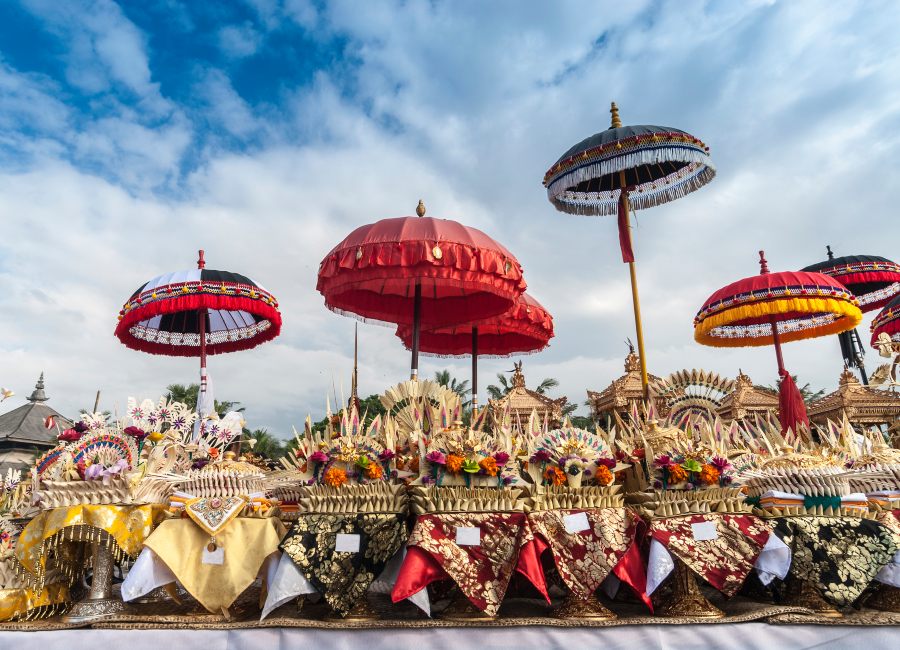
The vast majority of Bali’s tourism, and 100% of its package holiday scene, occurs in the beaches and resorts in the south of the island. There are many locations to choose from each catering to a different style of traveller. Seminyak on the southwest coast draws a hip, upmarket crowd looking for creature comforts and a lively nightlife scene, with many luxury hotels and upscale bars and restaurants. Further up the coast Canggu has a youthful focus thanks to its excellent surf and evident backpacker roots. At the opposite end of Seminyak is brash and bouncy Kuta – only recommended for those seeking a very busy stay. Around on the southeast coast is quieter, village-like Sanur – often our preferred beach of choice due to its relaxed atmosphere and excellent hotels.
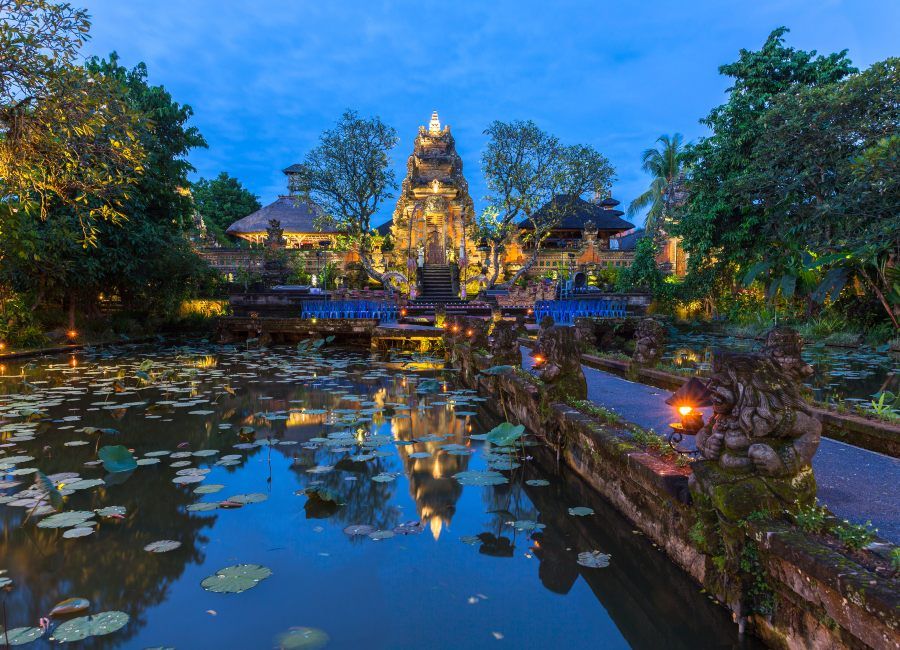
Considered the heart and soul of Bali’s hippy scene, Ubud is the island’s top non-beach destination. Once a bucolic and unspoilt collection of villages, Ubud today is a sprawling town that spreads across a wide patchwork of ricefields and rivers. It has seen a surge in interest in recent years in part to the book and film ‘Eat, Pray, Love’, but its tranquil appeal hasn’t been spoiled yet, with plenty of tranquil temples, impressive Hindu architecture and photogenic rice terraces to be found. These sit alongside trendy cafes and boutique shops selling the island’s famous craftsmanship and local artists’ works. There are plenty of museums and cultural performances to enjoy – especially the unique and colourful traditional Balinese dances.
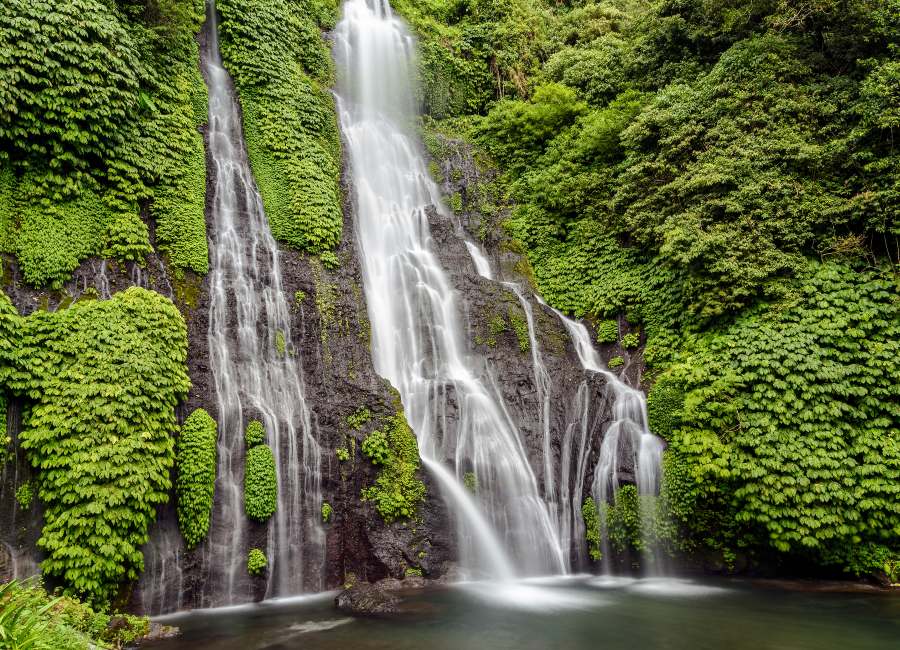
Tucked into the mountains in north Bali, among rice fields, clove and coffee plantations, the peaceful village of Munduk has an enchanting, misty ambience. Among the surrounding scenery you’ll find rolling terraces of emerald green rice fields and waterfalls cascading off dramatic cliffs. Hiking opportunities here are epic, with plenty of cultural experiences available too, offering a deeper connection to nature and an understanding of Balinese traditions. You might learn how to make Canang Sari (offerings), how to wear traditional Balinese attire or visit a coffee plantation for a tour and tasting of the fresh-roasted brew.
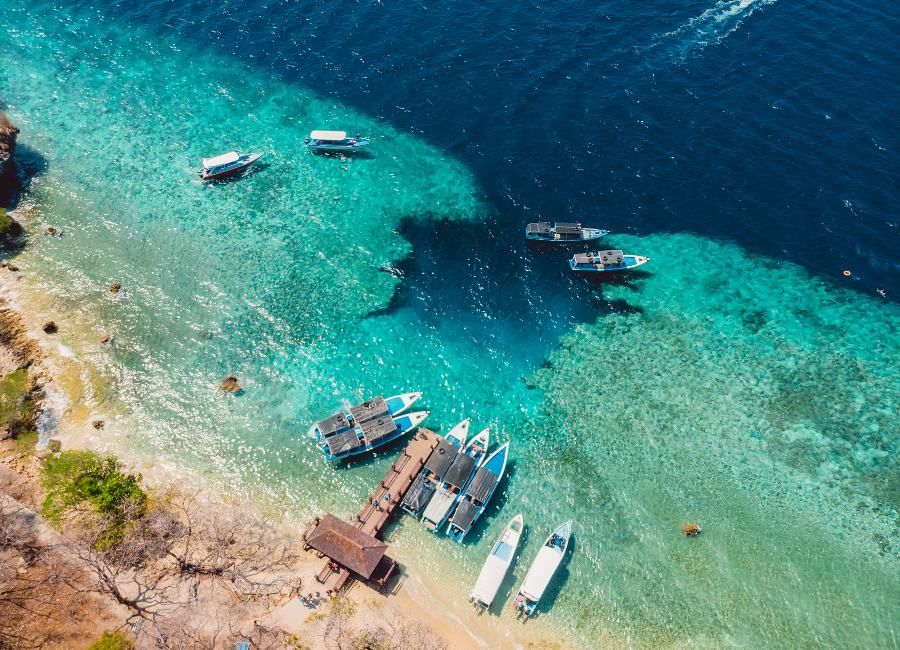
Far from the buzzing south coast, the peaceful coastal village of Pemuteran lies on the border of West Bali National Park and serves as the main gateway to Menjangan island, considered the best destination for snorkelling and diving in all of Bali. Nestled between the mountains and the sea, it’s a sleepy town calling both outdoor enthusiasts and those who want to enjoy plenty of relaxation. The park itself is home to a spectacular array of fauna and flora, including long-tail macaques, Banteng, a species of wild cattle, deer, wild boar, leopard cats, and 160 bird species. Accommodation can be found within the confines of the park, or back in Pemuteran should you prefer access to local shops and eateries.
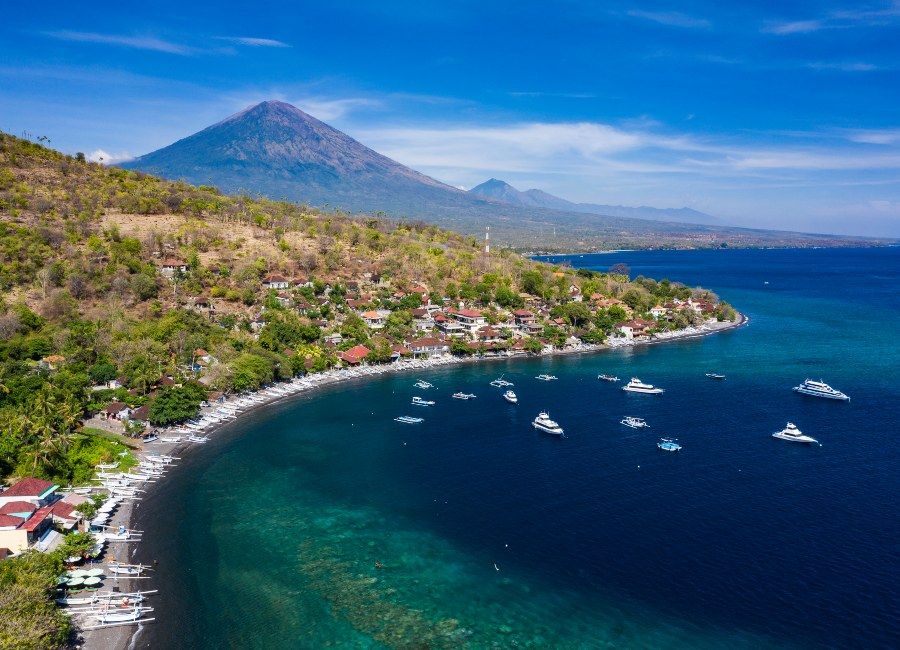
Those embarking on longer, round-island trips will find Bali’s lesser-visited eastern beaches pleasantly tranquil, authentically Balinese, and scenically striking. This stretch of coast is black volcanic sand & crystal clear waters, set against a dramatic backdrop of Mount Agung and Mount Batur. Village resorts Amed and Candidasa offer outstanding diving and snorkelling, plus good quality hotels, making a stark contrast to the over-touristed south. As well as underwater riches, your stay here can also include adventures inland such as hiking, rafting, mountain biking, and visits to striking cultural sites such as Tirta Empul and Pura Lembuyang.
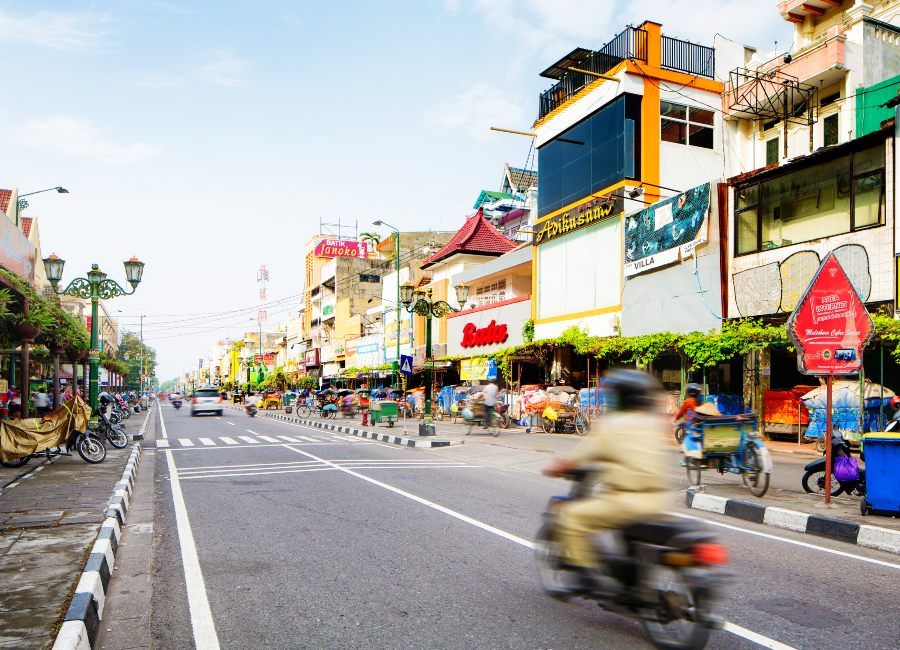
Java’s cultural capital, Yogyakarta – pronounced (and sometimes spelt) Jogjakarta, or simply ‘Jogja’ – is Java’s most popular tourism destination. This small city of around half a million people is the island’s artistic and intellectual heart. You’ll find historic treasures – at its centre is a large and attractive Kraton (walled palace) and around on its eastern edge you’ll find the majestic, UNESCO-listed Prambanan temples – juxtaposed with a modern, youthful scene. Yogyakarta’s sizeable university population, plus its artistic DNA, provide a colourful, walkable city centre with numerous boutiques, cafes, eateries, craft centres, and an excellent street food scene. The city is a perfect starting point for memorable overland trips through Java and on to Bali.
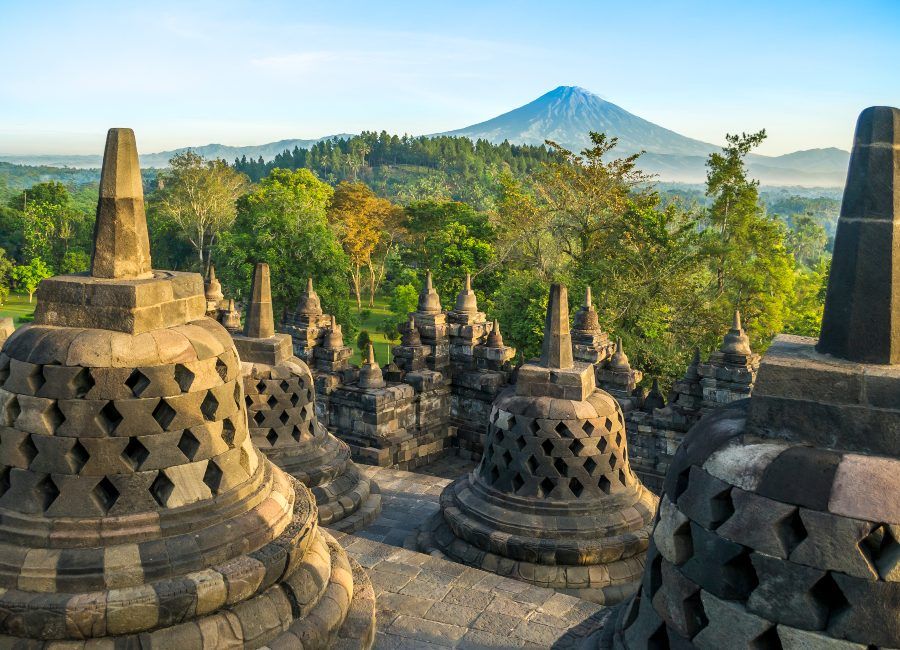
Around 75 minutes north of Yogyakarta are the stunning, also UNESCO-listed, temples of Borobudur. Thought to date back to the 7th century, this is the largest Buddhist temple complex in the world; surrounded by fertile paddy fields and set against a backdrop of soaring volcanoes, it’s a genuinely staggering, once-in-a-lifetime sight. Borobudur’s proximity to Jogja means it is possible to visit as a day trip, but we recommend staying out here and allowing yourself more time to take in the temples and surrounding countryside, and to time your visit for dawn or dusk when the site is at its most photogenic.
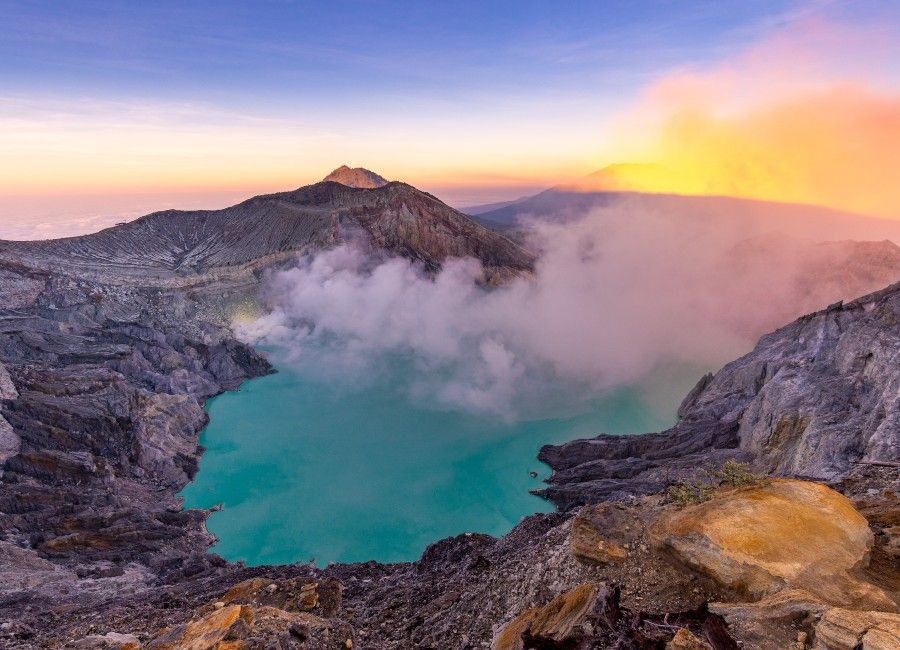
A string of smouldering volcanoes runs through Java, from legendary Krakatoa off the west coast to ethereal Ijen, on the eastern tip of the island looking across to Bali. Any itinerary through Java and Bali must call in at Kawah Ijen, where a sunrise hike takes you up from the fertile paddy fields at the volcano’s base to a summit looking straight down into its ice blue crater lake, at which point you might feel like you’ve landed on a different planet. Trekking along the path with you are Ijen’s superhuman sulphur miners, who dig down into the crater for the ‘devils gold’, ferrying loads of up to 90kg between the crater and trailhead.
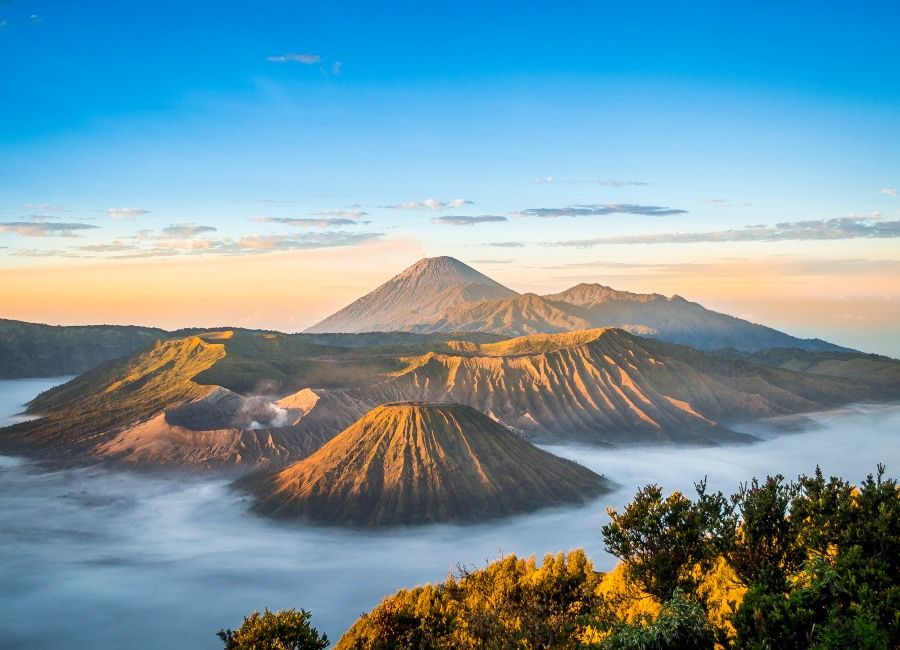
In the centre of Java, roughly halfway between Mt Ijen and Yogyakarta, is the equally stunning Bromo-Temenggor National Park. Sitting within a huge volcanic massif which also houses Mt Semeru and Mt Batok, a viewpoint over the three peaks, with the otherworldly ‘sea of sands’ in the foreground, is one of Indonesia’s most iconic and sought after photography opportunities. As with Ijen, the area houses several fantastic luxury lodges, allowing you to explore the incredible scenery in comfort and style.
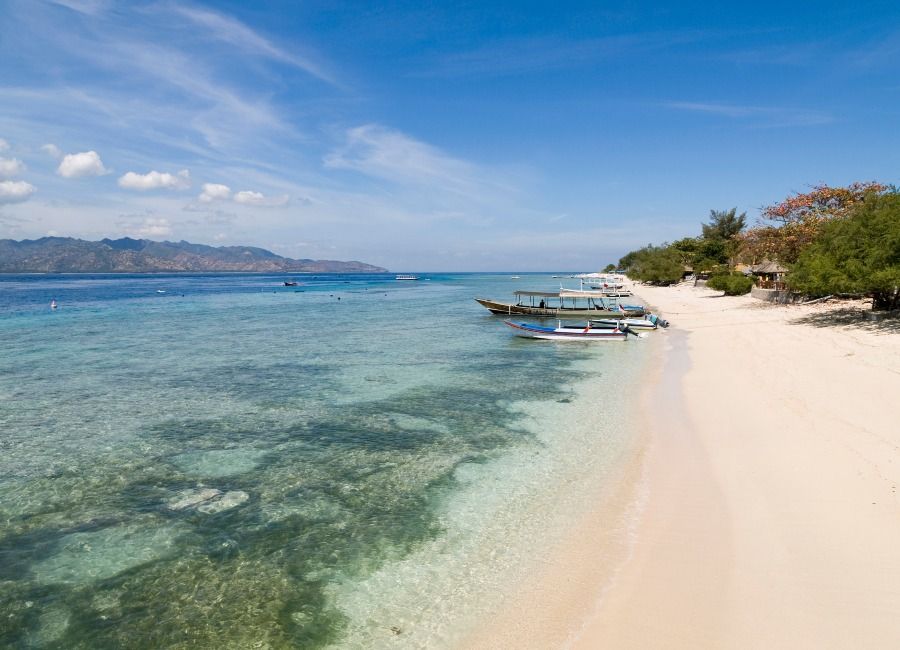
Made up of three tiny islands just a short boat ride from Lombok, Gili Trawangan, Gili Meno, and Gili Air have many things in common, including postcard-perfect beaches and crystal-clear blue water with an abundance of exotic marine life, but they each offer something unique of their own. Gili Trawangan is the most developed and the largest: it has a party scene of sorts, but still a very relaxed getaway. Gili Meno is the smallest, known for its thriving population of sea turtles, while Gili Air is home to the most authentic villages and traditional huts, which sell locally produced crafts.
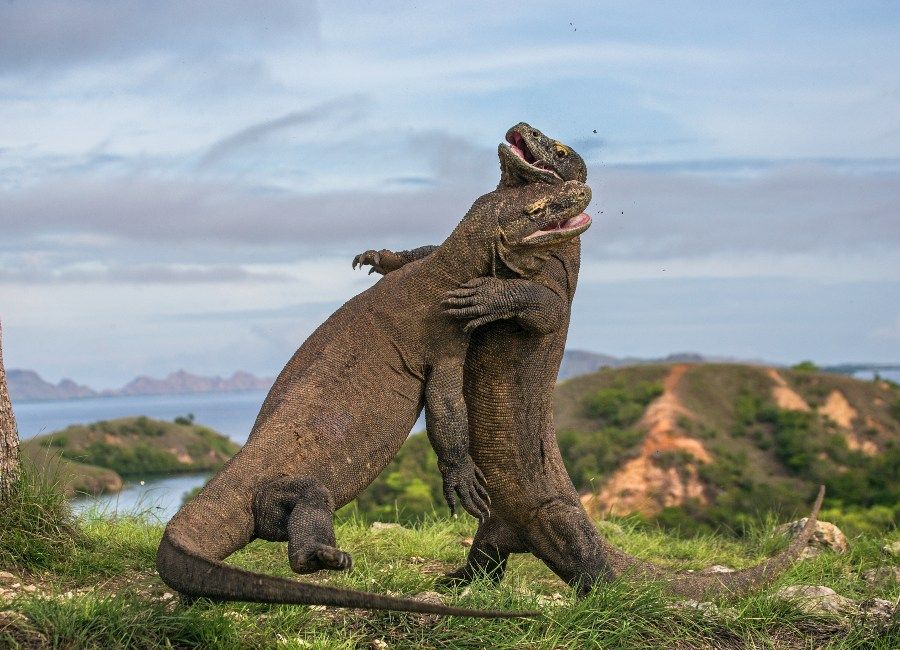
In a country of endlessly striking scenery, Komodo may be the most staggering. Coming across from Bali or Java you’ll notice the landscape become dramatically drier and starker, with the Komodo National Park made up of countless earthy-toned islands, contrasted by beautiful coral blues and pink-hued beaches. The best way to explore the Park is on a charter cruise, taking you from islet to islet, where you’ll come face to face with the famous Komodo dragons – as well as a host of other unforgettable adventures both on land and under the sea.
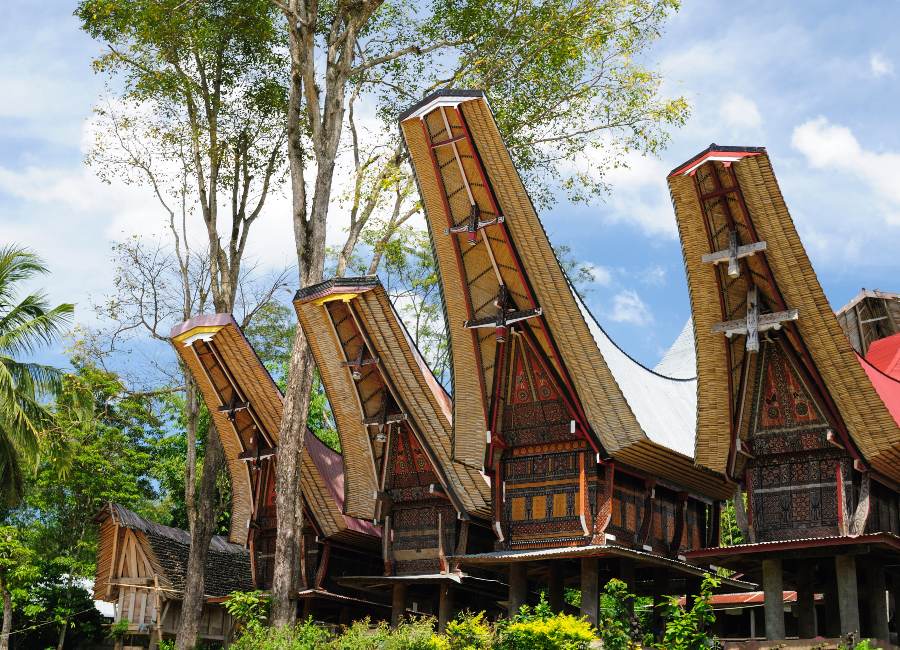
Sulawesi has a wealth of attractions, but top of any visitor’s list is a memorable journey up into the central highlands to the villages around Rantepao – home to the famed Toraja people. The Toraja have long held a fascination for anthropologists and intrepid travellers alike, known for their unique attitudes towards the deceased and their elaborate, multi-day funeral celebrations. Toraja villages – dotted all across this mountainous region – are easy to spot for their unique saddleback tongkonan houses. A visit to this region is an experience unlike any other in Indonesia – or the world.
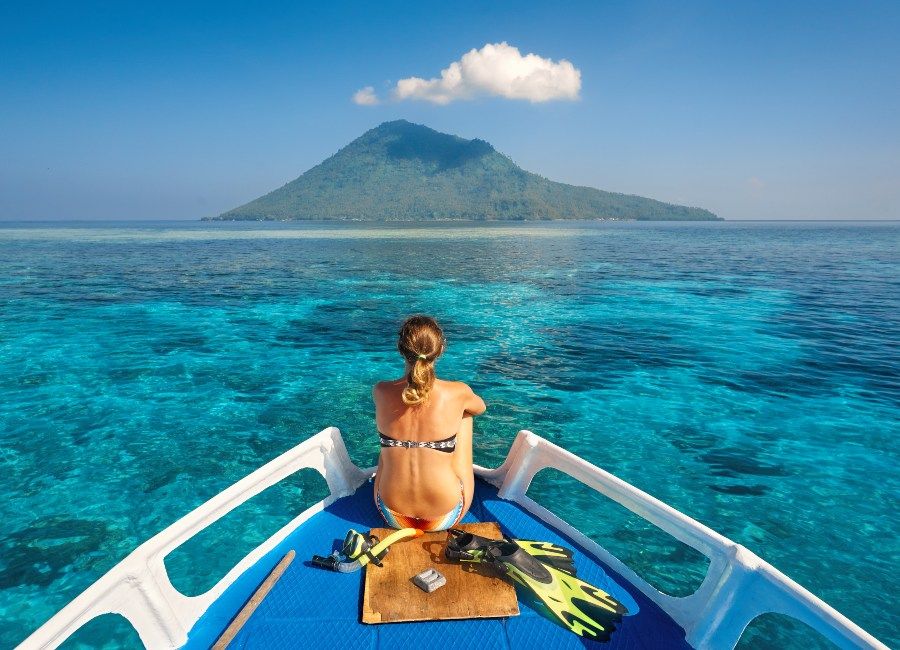
At the northeastern tip of Sulawesi is Manado. With a busy little airport connecting to Bali, Jakarta, and Singapore this smallish city is a jumping-off point for adventures inland – up to the slopes of Minahasa and Tomohon, known for their beautiful gardens, intriguing village life, and rewarding hikes around Mt Mahawu – or off-shore, into the little-visited Bunaken National Marine Park. The latter is another of Indonesia’s underwater oases, with several excellent dive resorts offering an off-grid and highly attractive slice of paradise.
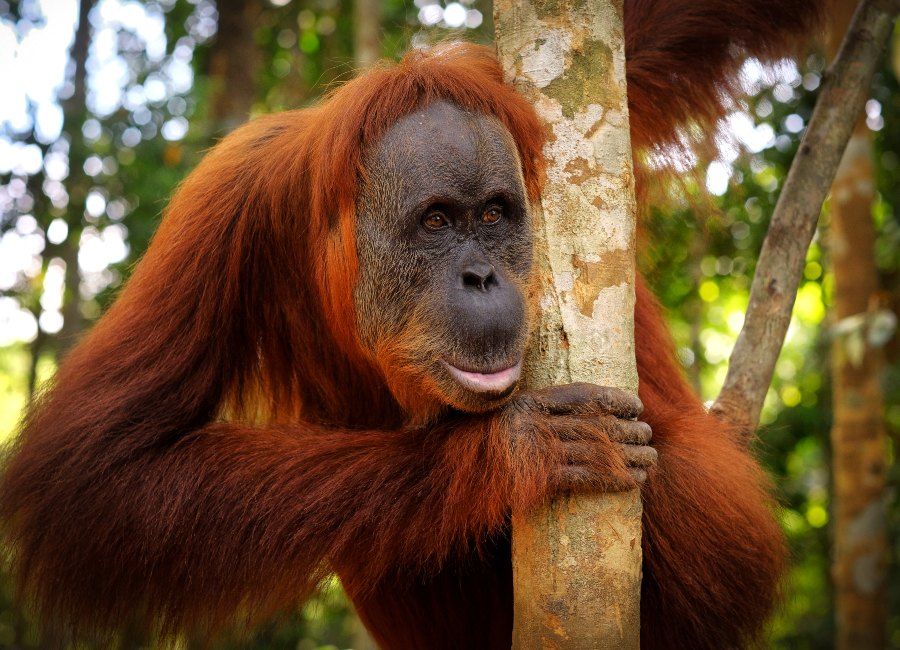
A journey of around 5 hours’ takes you from the clogged, unloveable urban sprawl of Medan deep into the rich jungles of Gunung Leuser National Park. Here you’ll find the tiny riverside village of Bukit Lawang, your base for adventures into the heart of the pristine park, trekking for sightings of orang-utan, rhino, elephant, and a huge array of tropical birds, reptiles, and lizards. Accommodation here is basic at best but those of an adventurous disposition which will be richly rewarded.
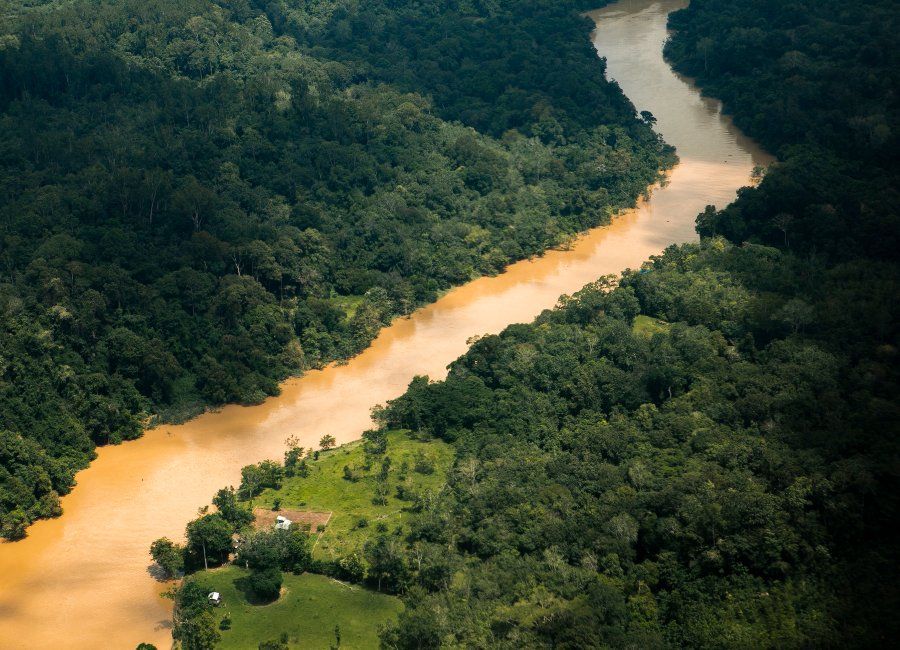
The immense and many storied island of Borneo is shared by both Malaysia and Indonesia, with the latter taking up by far the majority of the island. Unlike Malaysian Borneo however, much of the Indonesian half – known as Kalimantan – is dense and untravelled wilderness. A few small pockets are open to tourism, chief among them the Tanjung Puting National Park, in the south of the island. Accommodation is simple but memorable, with overnight stays possible sleeping on the top deck of ‘klotok’ river boats, which wind their way along the Sekonyer River looking out for swinging orang-utans and tropical birds.
As one of the world’s leading tourism destinations, you won’t be surprised to find Bali a treasure trove of memorable and extremely comfortable accommodation. The most developed areas of the island – namely the large south coast resorts such as Kuta, Nusa Dua, and Seminyak – house everything from boutique boltholes to mega family resorts.
As travellers ourselves we tend to steer our guests away from these locations, and instead pick properties where you’re encouraged to get to know the local area better. On the south coast, we’d encourage quieter beaches such as Sanur – where you’ll find old favourites such as the Sudamala or Tandjung Sari, plus several fine private villas – or the dramatically situated clifftop resorts of Uluwatu – such as the Alila or Anantara.
Up in Ubud you’ll find an even more impressive set of accommodation options. With a backdrop of waterfalls, rapids, and lush rice fields, the best hotels here sit harmoniously within their photogenic surroundings; our personal favourites being the Insta-friendly Como Shambala or luxurious Capella. Deeper into central Bali the high-class accommodation and gorgeous settings continue, with no drop off in quality: ask us about the Sanak Retreat in Munduk, Kintamani Hotel on Lake Batur, or Wapa di Ume in Sidemen. The same continues along Bali’s less-visited black sand northern, western, and eastern coasts; our favourites here being the Menjangan for West Bali National Park, the Alila Manggis, or the uber-luxe Amankila in Candidasa.
The depth and breadth of quality accommodation is not just limited to Bali: wherever you travel across Indonesia there is always a wide choice of property to choose from. Large towns or areas of tourism interest – such as Yogyakarta in Java, Komodo National Park in Flores, or Sulawesi’s magical Tana Toraja – house multiple upmarket options, while in other parts of the country a particular property of choice – such as Nihi Sumba, the Bawah Reserve, or the Kura Kura Resort – has made their small patch of paradise a destination in itself.
Our specialists know Indonesia’s hotels inside out, and will hand-pick your accommodation based on first-hand experience whilst working to your exact requirements. Below are some of our favourite properties across Bali and the wider Indonesia archipelago.
Bali is a paradise for adventurous travellers, offering wild jungles inhabited by monkeys, active volcanos, misty lakes, and an abundance of waterfalls. It is a destination with appeal for all kinds of visitors: outdoor adventurers, surfers, hikers, history buffs, night-owls, families, and honeymooners. There are plenty of opportunities for lazy days of sunbathing, indulging in luxury spa treatments or just hanging out sipping cocktails while gazing out at the jaw-dropping scenery.
Bali’s natural beauty is incomparable. The landscapes include everything from gorgeous white sandy beaches to lush rainforests with countless waterfalls and soaring volcanic mountains. The island is ringed by white sands along its south coast, and black sands in the north and west. Part of the Coral Triangle, home to the planet’s highest diversity of marine species, the coral reefs that surround the island are a magnificent sight that draws divers and snorkelers from around the world.
The beauty of the Island of the Gods goes much deeper than its outward appearances. There are many traditional cultural traditions still practised today, with the Balinese holding a wide range of celebrations and ceremonies year-round. When it comes to cuisine, from street-side snacks and cheap soup, rice and noodle dishes to gourmet dining, the food is to-die-for – and it’s easy to discover more with a cooking class or food walk.
Wider Indonesia is an immersive, invigorating destination offering over 17,500 islands, 6,000 of which are inhabited, bringing diverse landscapes and a never-ending menu of adventures. If you’re keen to see more of the archipelago – one of the richest, most enthralling, and little-explored destinations on the planet – ask our consultants for their recommendations on underwater oases, jungle exploration, mystical ancient temples, vibrant cities, and cultures which shift dramatically from island to island.
UTC can arrange an enticing variety of tours and activities in Bali and all across Indonesia. We’ve picked just a few of our favourites below. There’s plenty more to recommend though; let us know what excites you most about Indonesia, and we’ll map out the perfect itinerary.
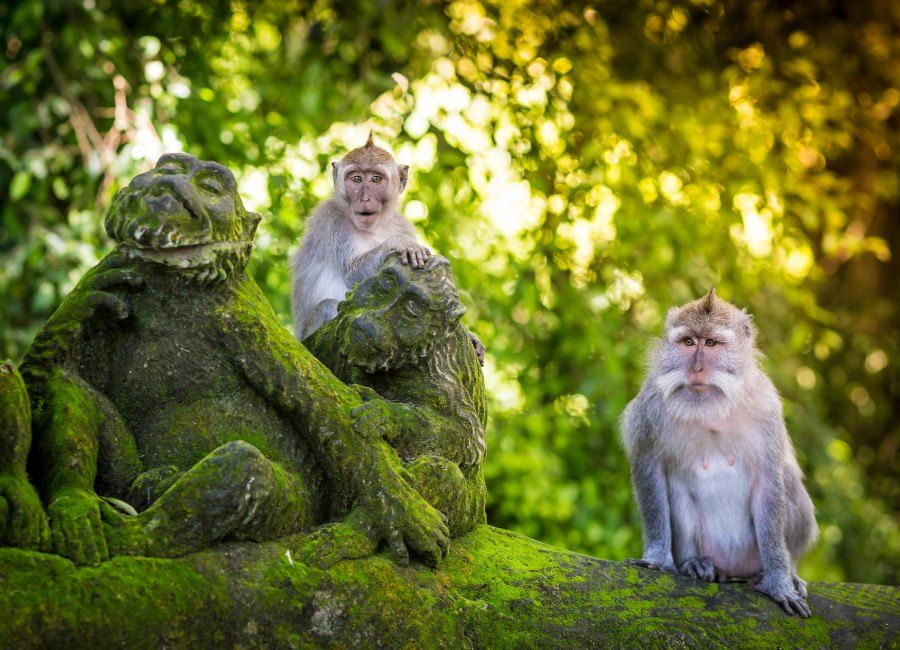
We encourage at least 2 or 3 full days to explore Ubud properly. The Monkey Forest is a sanctuary home to more than a thousand Balinese long-tailed monkeys that roam freely. Visitors can stroll the paths that meander through lush rainforest with banyan trees and temples, while enjoying close encounters with the animals. Other activities include hiking, cycling, village walks, cooking classes, and visits to secluded temples, art galleries, or boutiques.
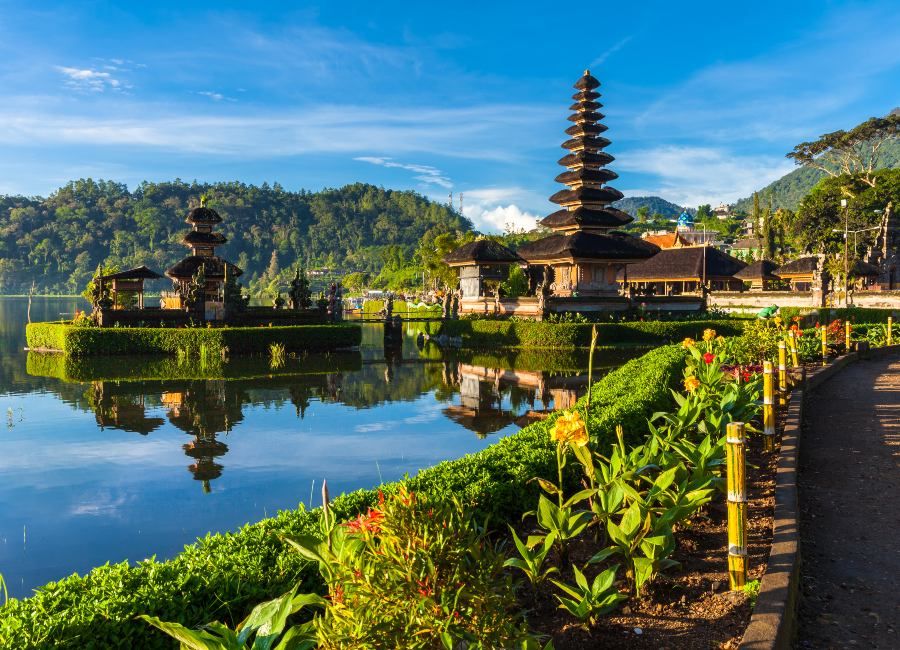
Made up of impressive historic structures and vast pools that sit against a backdrop of Bali’s eastern shoreline and soaring Mount Agung, the Taman Ujung Water Palace is a truly majestic sight. It boasts beautiful Balinese and European architecture, evident in the ornate pillars and statues, with the buildings linked by pathways and long, elegant bridges, making it a favourite location for photographers. This is just one of many stunning historic buildings; others include the Tanah Lot, Pura Besakih, Ulun Danu Bratan, or Penataran Lempuyang with its famed ‘Gates of Heaven’.
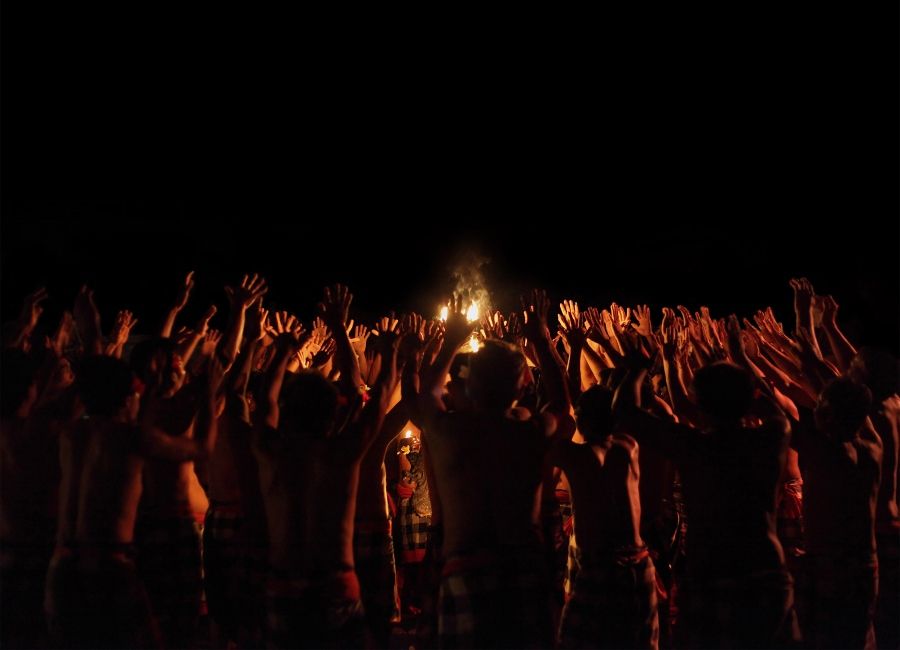
This incredible traditional dance takes place in a coastal clifftop amphitheatre at the Uluwatu Temple, at the southern tip of the island, commanding a spectacular view of the sea. It adapts the famous Ramayana Hindu epic, a story told in the form of dance, playing out against a glorious Balinese sunset. The culmination involves a massive fire display, with no musical instruments used, only the haunting chants of costumed worshipers. If you are unable to make it to Uluwatu smaller Kecak dances take place all across the island, particularly Ubud.
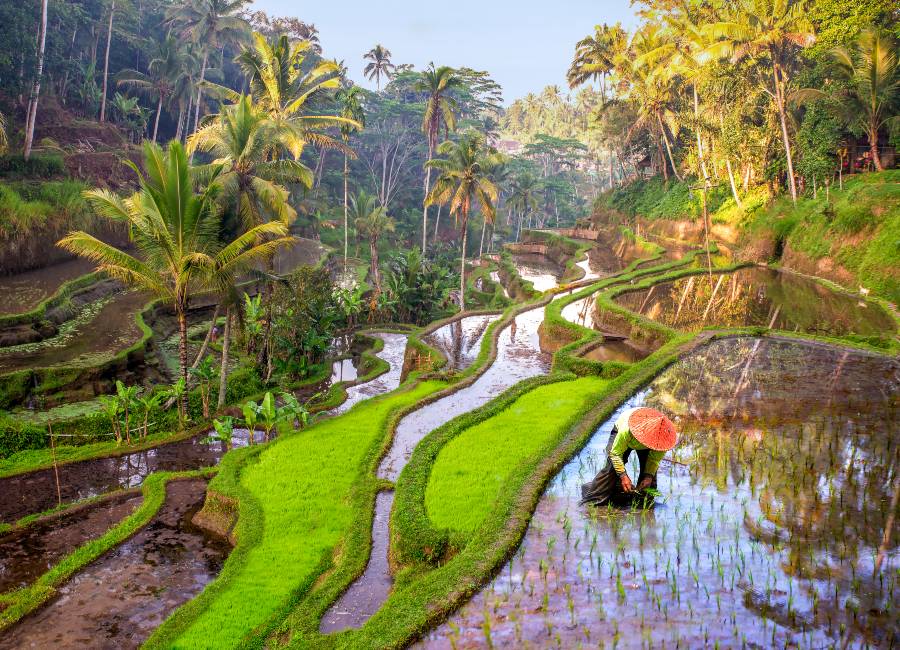
Cascading down the winding walls of a lush valley, the stunning Tegalallang Rice Terraces are just a 20-minute drive from Ubud, and make a fantastic half-day trip out. Exploring the terraces is one of Bali’s most enjoyable and treasured activities, with magnificent views and perfect photo opportunities on all sides. The scenic hillsides offer jungle swings and ziplines, and for an adrenaline rush ask us about mountain-bike routes rushing downhill from the volcanic slopes of Mt Batur to the rice fields north of Ubud.
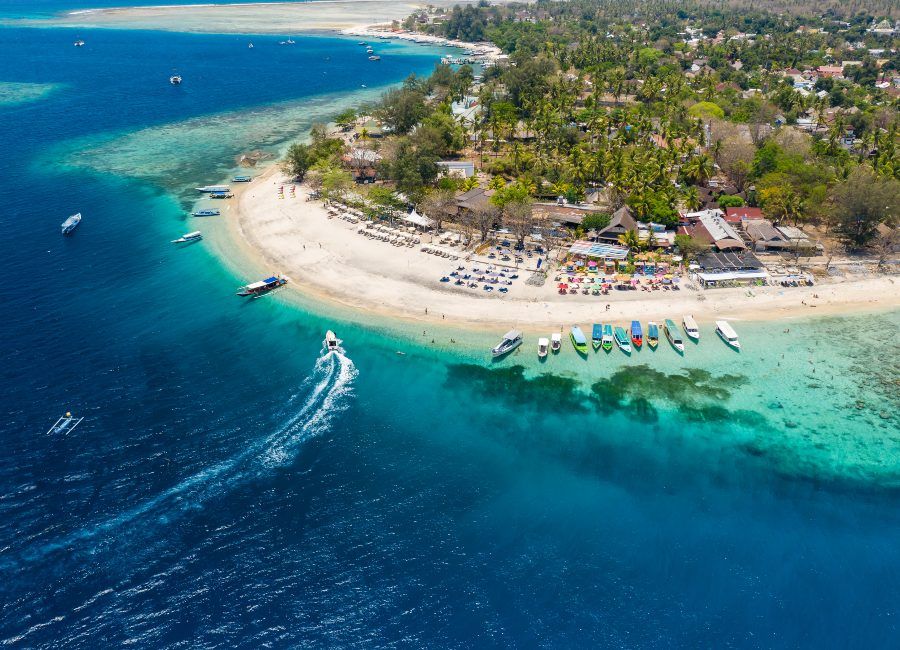
The Gili Islands are a small group of three tiny islands, lying off the northwest coast of Lombok, accessed by high-speed ferry from eastern Bali. All provide a tropical island paradise with white sandy beaches with coconut palms while vibrant coral reefs for snorkelling and diving lie just offshore. Gili Trawangan is the largest and most developed; Gili Meno the slowest-paced and most serene. Gili Air is a perfect blend of the other two, but it’s the only one that provides uninterrupted views of Lombok’s mountainous northern coast. Spend a few days hopping between them and get to know your favourite!
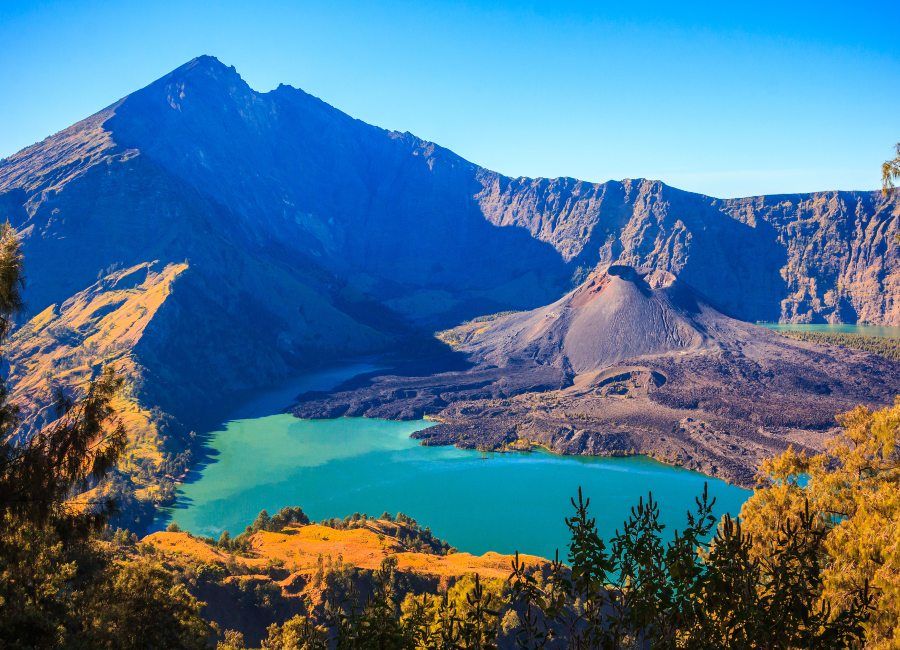
The Indonesian islands are strung along the Pacific Ring of Fire, with 130 active volcanoes found across the archipelago. Volcanoes are part of life here, and will form part of your adventures too! A hike to the summit of one of the more peaceful peaks is an enthralling and unforgettable experience, with our personal favourites (and also relatively easy-going hikes) being trips up to Mt Jien and Mt Bromo in Java, Mt Batur in Bali, or the more challenging climb of Mt Rinjani in Lombok. The scenery which cascades down the slopes of these majestic peaks is staggering too, with your drives, hikes, or cycles taking you through fertile rice paddies, cascading waterfalls, lush forests, and tiny picturesque villages.
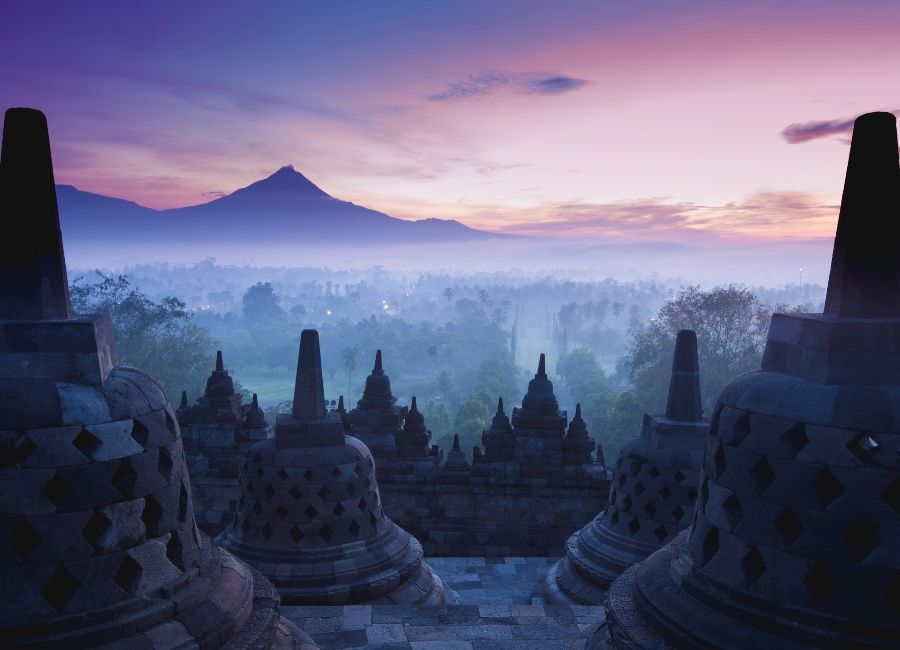
Indonesia is home to countless historic citadels – Hindu, Buddhist, Islamic alike – usually found in magical rural or coastal surroundings. If we had to pick a favourite, it would likely be the stunning temples of Borobudur, situated just north of Yogyakarta in central Java. UNESCO-listed Borobudur is the largest Buddhist place of worship on the planet, thought to date back to the 7th century. It is best visited at the crack of dawn, when you’ll see the sun appear from behind the distant peak of Mt Merapi and witness the temples alluringly bathed in the pinks and purples of early morning light.
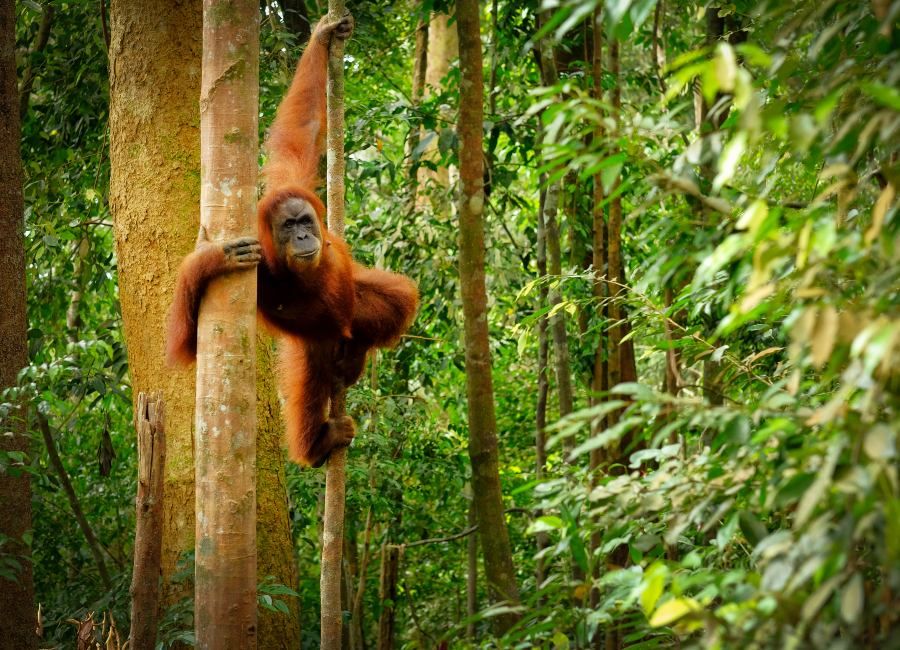
In Indonesia’s northern reaches the scenery becomes less volcanic and distinctly more tropical, with dense jungles offering a kaleidoscope of fascinating flora and fauna. Wildlife enthusiasts, particularly those who enjoy the thrill of the jungle, will be well rewarded by visits to Tanjung Puting in Kalimantan (Indonesian Borneo), Bukit Lawang in northern Sumatra, or the more isolated Lore Lindu or Tangkoko national parks in Sulawesi. Accommodation in these areas is very simple, but you’re here for creatures – rather than the creature comforts! Typical sightings include orang-utans, macaques, tiny tarsiers, deer, rhinos, elephants, and a whole host of colourful tropical birds.
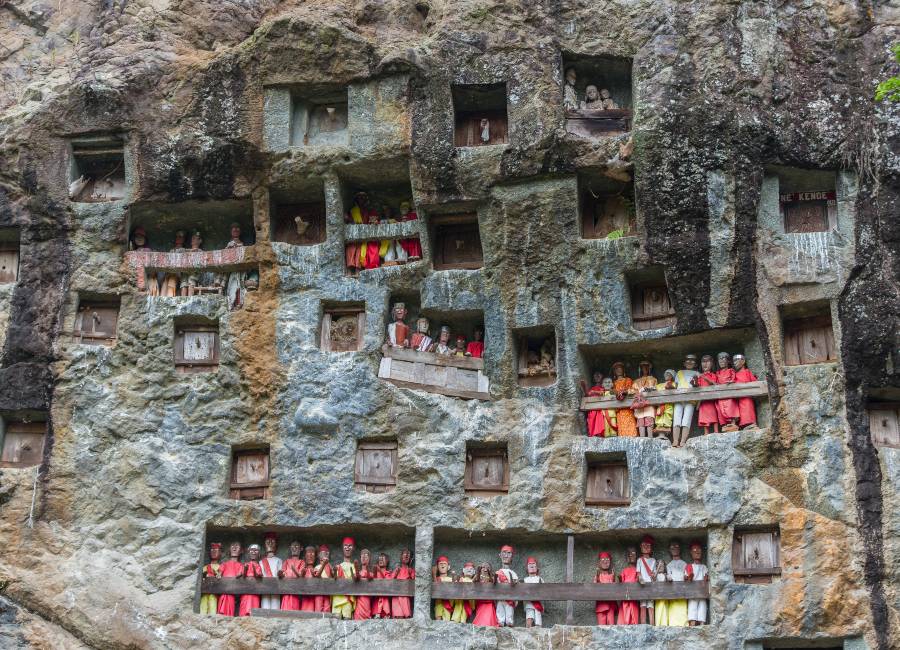
If you do make it to Sulawesi – and we strongly encourage it – we recommend a stay of at least 3 nights up in Tana Toraja. You will need a minimum of two days to explore the region, with numerous villages to drop into, intriguing cuisine to be sampled, and scenic hikes to be taken. Extra time up here will also allow your guide to sniff out an ongoing funeral. Your chances are pretty good: held over several days all across the Toraja region, occurring year-round, and usually lasting several days, these elaborate, noisy, colourful ceremonies are guaranteed to immediately become one of your most treasured ‘through the looking glass’ travel experiences.
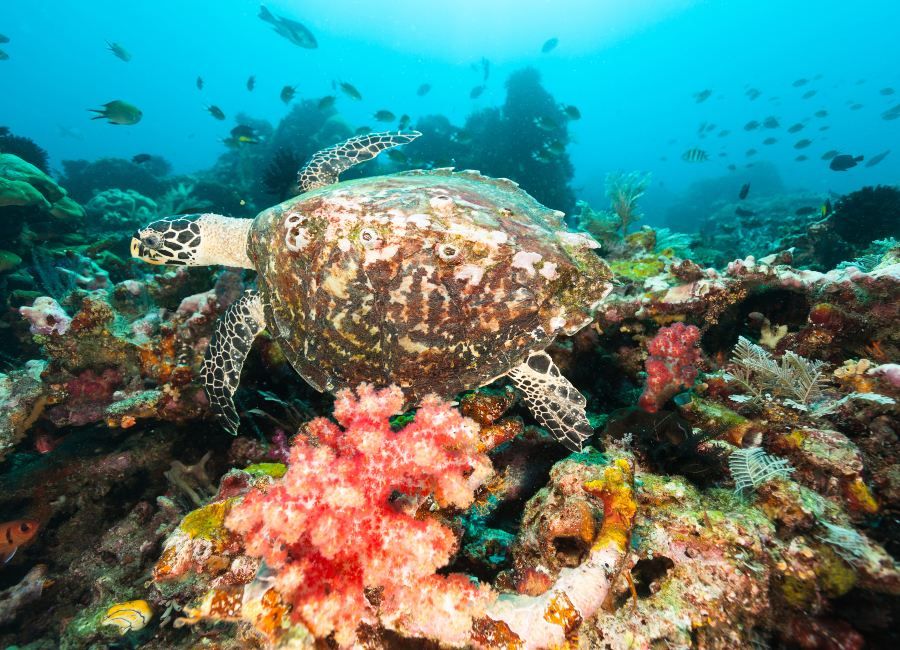
Indonesia has a solid claim to being the world’s best dive destination. Bali sits within the ‘coral triangle’ and offers fantastic reef and wreck diving off its northern and eastern coasts; key spots being Amed, Candidasa, and Nusa Lembongan. Dedicated divers should look further afield though, with unparalleled underwater riches found in far-flung corners of the archipelago such as Sumba, Raja Ampat, and northern Sulawesi. Each of these destinations has a fantastic dive resort to match, ensuring a productive and luxurious stay.
When planning any trip your first one of the most important considerations for getting the most out of the experience is knowing the very best time to visit – based on both climate, and taking into account any festivals or local celebrations.
For Bali – and also Indonesia’s other established tourist destinations Java, Lombok, and Flores – the ‘best time’ is less of a concern, with these regions straddling the equator and therefore enjoying a largely consistent (if tropical) climate year-round. The recognised best time to visit is March through to October: this is when the weather is most likely to be consistently pleasant with minimal rain, calm seas and blue skies, making it easy to travel between the islands while enjoying gorgeous backdrops for photos and all sorts of adventures.
The more far-flung regions of the archipelago have an inverted seasonality, with the best time to visit Papua, Raja Ampat, and northern Sulawesi generally falling from November through to March. These areas typically attract a dedicated, intrepid traveller who is looking for a specific kind of trip – diving, cultural immersion, trekking, jungle exploration – in which case please ask your consultant for a detailed analysis of when to plan your trip. There are other factors to consider for specialist trips: current or wind patterns for divers, fruiting seasons for wildlife enthusiasts, or festival calendars for those look to study one of Indonesia’s many unique cultural groups.
Whenever you do plan to visit you’ll find an equatorial climate countrywide, with short, sharp downpours or dramatic thunderstorms occurring at least once or twice during your trip, and temperatures that are consistently warm but never scorching hot. A wider guide on Indonesia’s seasonality is found below.
Indonesia is a truly compelling destination, and with a varied climate that has something to offer all around the year. We’ve put together an overview of climate season-by-season and region-by-region below.
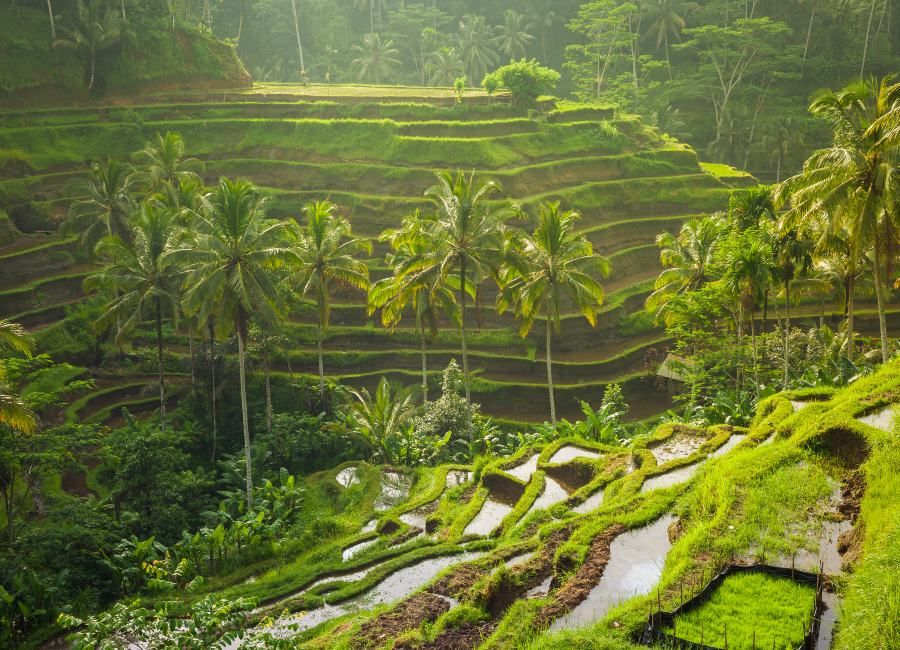
April through October is the peak travel season, enjoying the driest weather of the year. The average temperature ranges from 79 to 90 degrees Fahrenheit, while rainfall averages from about 1.2 to less than 4 inches. It’s the best time to visit Lombok and Bali, with the beautiful beaches ideal for swimming, snorkelling and all sorts of other water sports, or just relaxing on the sand. This is also when the waves off the western beaches will be at their best for surfing. There are several festivals that can be enjoyed during this time as well, including Ramadan in July, and Muharram from September through October.
The downside of visiting during the high season is that it is the peak time for tourists with schools out in Europe and the U.S, as well as throughout Indonesia. Depending on where you plan to go, from July through August in particular, you’ll find higher hotel rates and busier tourist sites, but you can almost always find a more remote place to venture to for tranquillity, like north Bali or one of the neighbouring islands.
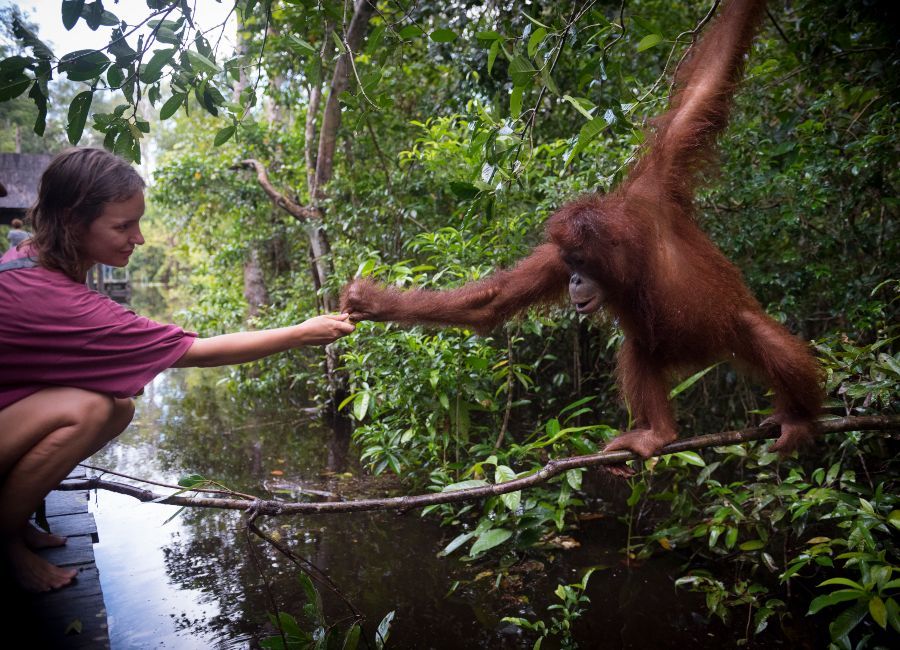
Although the ‘low’ season for Bali, you won’t find much difference in temperature, ranging from 79 to 91 degrees Fahrenheit. Indonesia as a whole is slightly wetter at this time, with rainfall averages from 5.9 to nearly 12 inches, bringing rain throughout the country with the exception of Papua and Maluku. Despite some saying this is not the time to come, Indonesia is really a year-round destination and this period is ideal for relaxing by the sea and avoiding the biggest crowds, provided you don’t visit around Christmas and New Year’s Eve. There are some unique festivals to enjoy too, including Nyepi on Bali, the Day of Silence, which is celebrated in March. The day before there will be a huge parade, with the following day spent in total silence.
While Indonesia is generally budget-friendly any time of the year, again, depending on where you go, the low season is the time you’ll find some of the best deals on accommodation and airfare, as well as being the quietest months for avoiding thick tourist crowds.

K. Devaraj
+91 79048 25833
Talk to our expert for further enquiry about tour and destination packages. We are here to help you 24/7 and recommend you budget packages.
